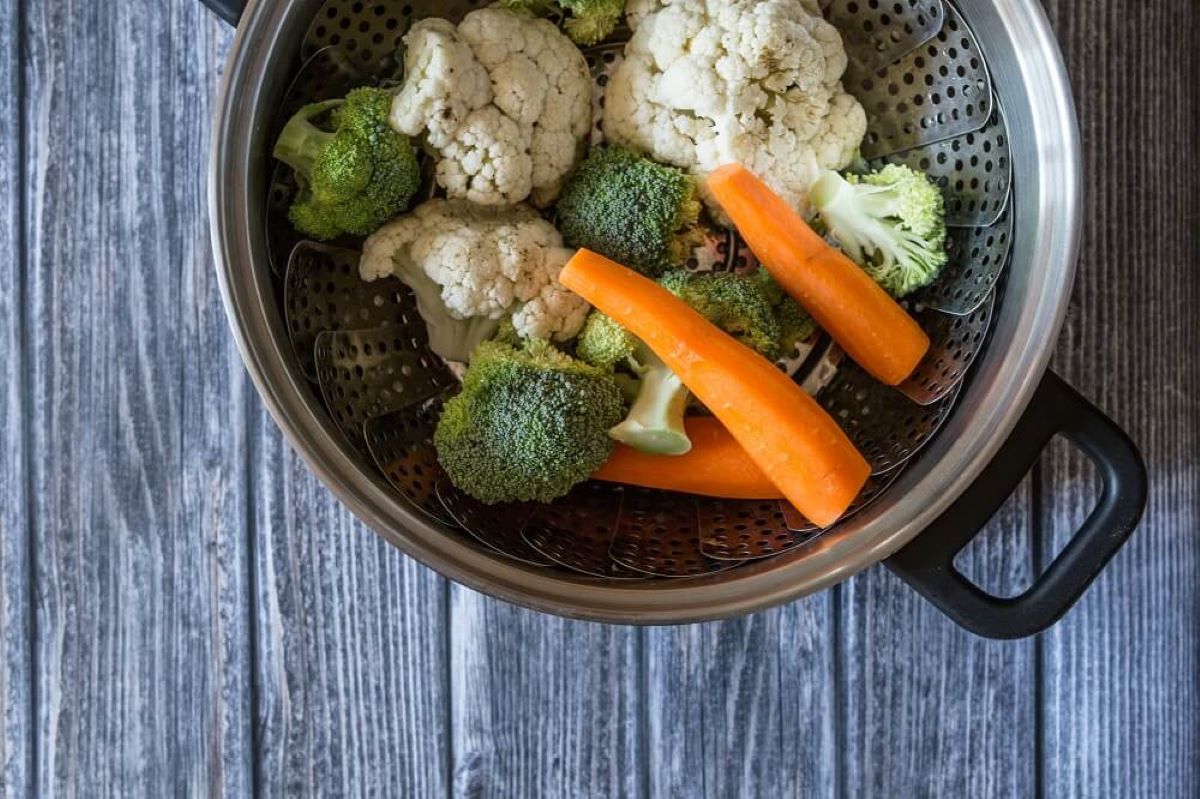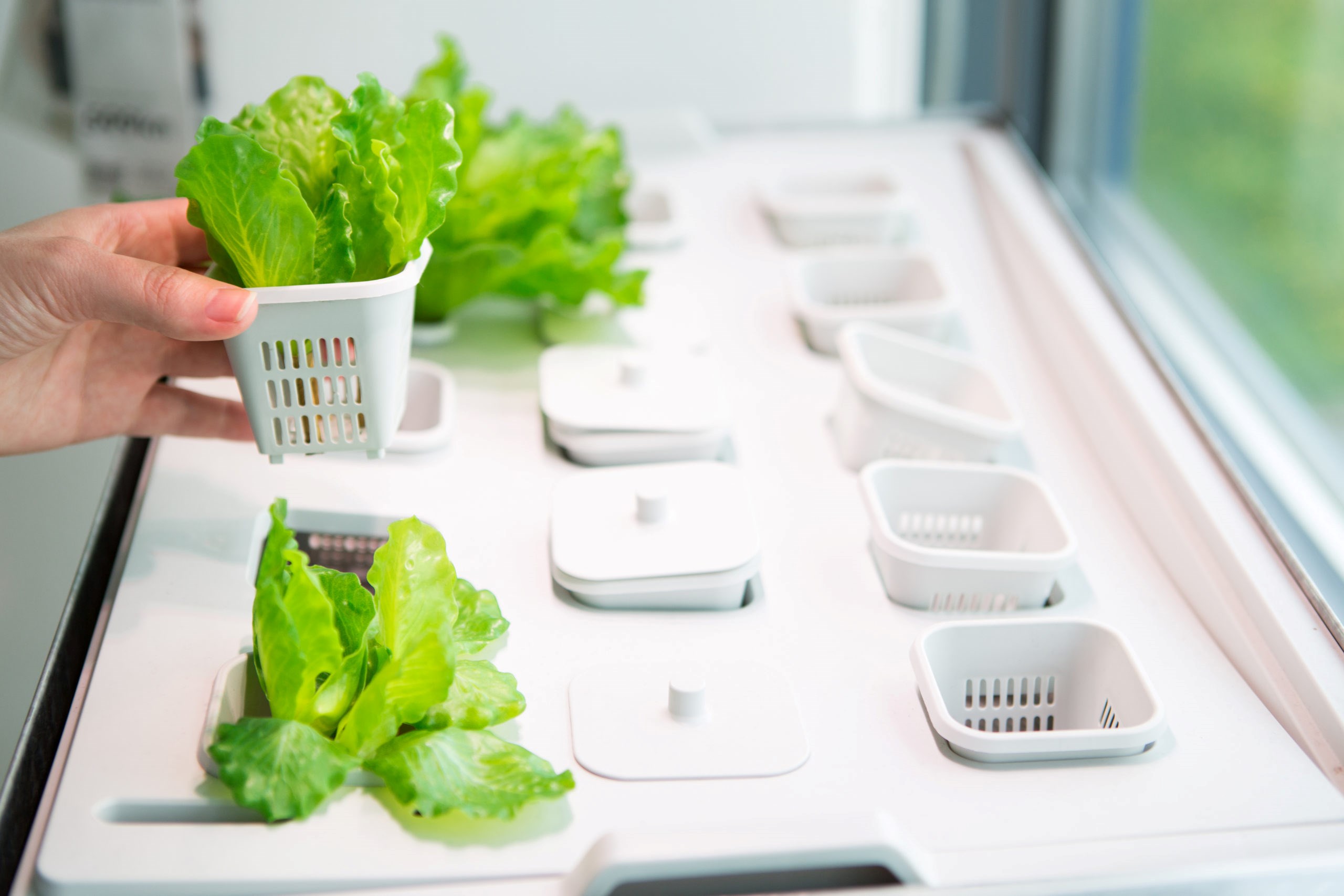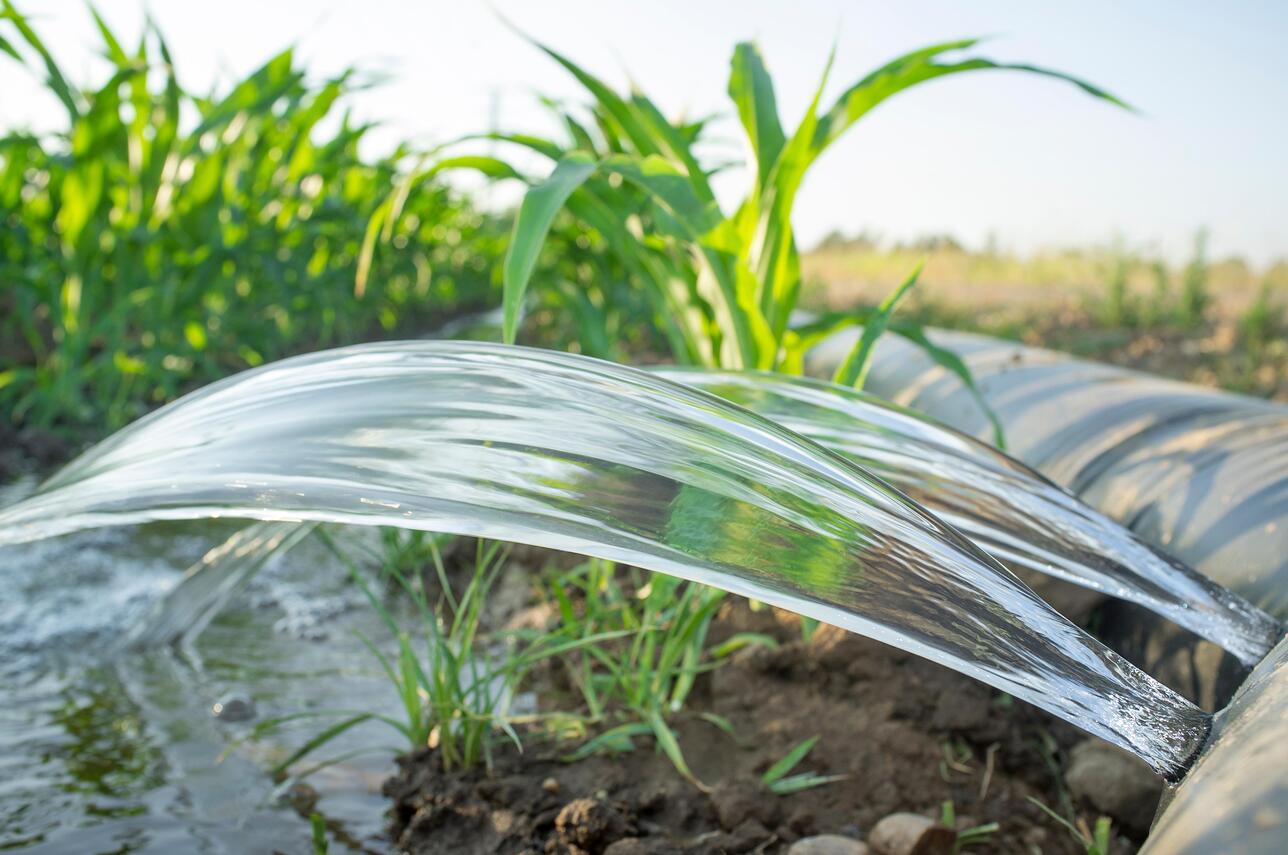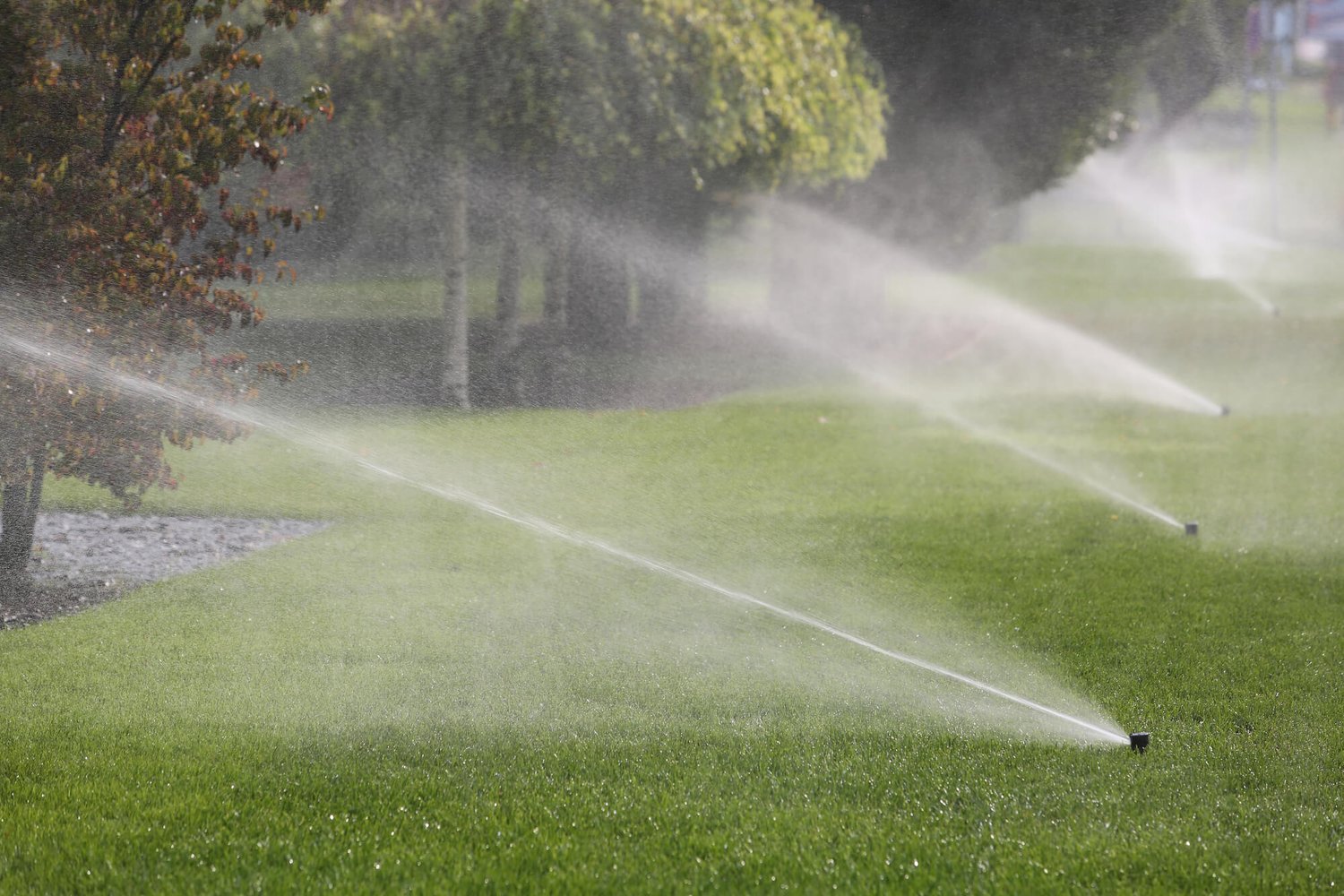Home>Gardening News and Trends>Latest News>What Are Some Ways To Minimize The Need For Irrigation
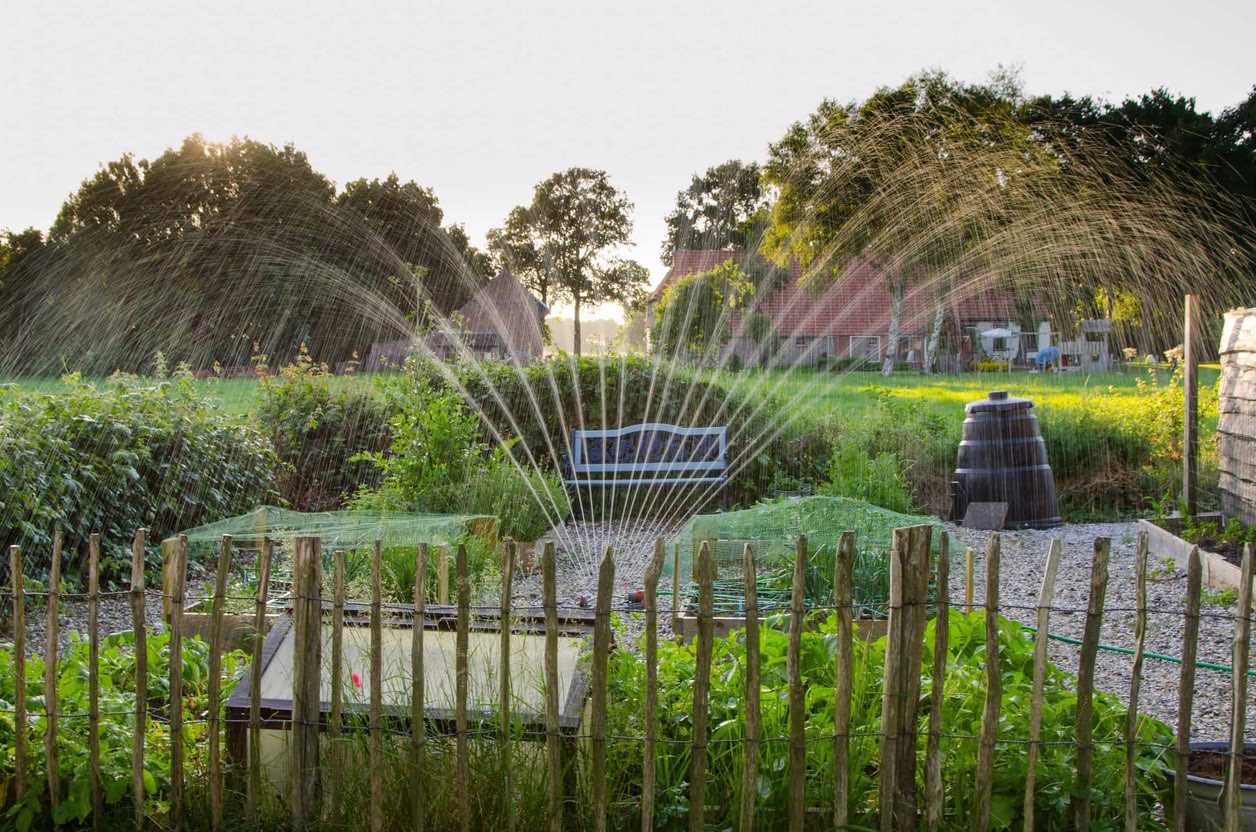

Latest News
What Are Some Ways To Minimize The Need For Irrigation
Modified: January 22, 2024
Discover the latest news on strategies to minimize the need for irrigation in your garden. Learn effective ways to conserve water and maintain a sustainable landscape.
(Many of the links in this article redirect to a specific reviewed product. Your purchase of these products through affiliate links helps to generate commission for Chicagolandgardening.com, at no extra cost. Learn more)
Table of Contents
Introduction
Water scarcity is becoming an increasingly pressing issue in many parts of the world. As a result, it is crucial to find ways to minimize the need for irrigation in our landscapes and gardens. Not only does reducing irrigation help conserve water resources, but it also saves money and energy. Fortunately, there are several effective strategies that can help achieve this goal.
In this article, we will explore various methods and techniques to minimize the need for irrigation. From careful plant selection and placement to efficient irrigation systems and water-wise landscaping techniques, there are numerous ways to create a thriving garden while using less water. By implementing these strategies, you can contribute to the preservation of water resources and promote sustainable practices in your own backyard.
It’s important to note that while these strategies can significantly reduce the need for irrigation, they may not eliminate it entirely. Depending on your region’s climate and specific landscape requirements, some amount of irrigation may still be necessary. The aim is to optimize irrigation efficiency and minimize water usage wherever possible.
Let’s dive into the various techniques and approaches that can help you minimize the need for irrigation in your garden and create an environmentally sustainable landscape. By following these practices, you can conserve water, save money, and contribute to the overall sustainability of our planet.
Plant Selection and Placement
One of the key factors in minimizing the need for irrigation is selecting the right plants for your landscape. Choosing native or drought-tolerant species that are adapted to your region’s climate can significantly reduce water requirements. These plants have developed mechanisms to survive with minimal irrigation and can thrive in challenging conditions.
Additionally, consider the placement of plants in your landscape. Grouping plants with similar moisture requirements together can create microclimates and reduce water loss through evaporation. Placing plants that require more water in areas with natural sources of moisture, such as near downspouts or low-lying areas, can also help minimize irrigation needs.
Before selecting plants, it is essential to understand your soil type and drainage conditions. Plants that are well-suited to your soil type will have better root development and access to groundwater, reducing the need for supplemental irrigation. Conduct a soil test or consult a local gardening expert to determine the soil composition and identify any necessary amendments.
Furthermore, consider the growth habits and sizes of plants when planning your landscape. Tall or sprawling plants can provide shade and reduce evaporation by creating a microclimate, while also reducing the water requirements of nearby plants. By strategically placing taller plants to the west or south of smaller plants, you can provide shade during the hottest parts of the day.
Incorporating ground cover and mulching can also play a crucial role in reducing irrigation needs. A layer of organic mulch helps retain moisture in the soil, minimizes evaporation, and prevents weed growth. Additionally, it regulates soil temperature, reducing heat stress on plants and minimizing water loss through evaporation.
By carefully selecting and placing plants in your landscape, considering their moisture requirements, growth habits, and soil compatibility, you can create a resilient and sustainable garden that requires less irrigation.
Soil Improvement and Mulching
Soil quality plays a crucial role in water retention and plant health. Improving your soil’s ability to hold moisture can significantly minimize the need for irrigation. One effective method is to amend the soil with organic matter, such as compost or well-rotted manure. These materials improve soil structure, increase water-holding capacity, and enhance nutrient availability to plants.
Another important aspect of soil improvement is proper drainage. Poorly drained soil can lead to waterlogged conditions and root rot, which can negatively impact plant health. If you have heavy clay soil, consider incorporating organic matter and using raised beds or mounded planting areas to improve drainage.
Mulching is another essential practice for reducing water loss and minimizing irrigation needs. Applying a layer of organic mulch, such as wood chips, straw, or compost, around plants helps retain soil moisture, regulate temperature, and suppress weed growth. Mulch also acts as a barrier, preventing water from evaporating quickly and reducing the need for frequent watering.
When mulching, ensure that the layer is thick enough to provide adequate coverage and insulation for the soil. Generally, a layer of mulch around 2-4 inches deep is recommended. Be cautious not to pile the mulch against the plant stems, as this can create moisture-trapping conditions and promote disease. Leave a small gap around the stems to allow air circulation.
In addition to organic mulch, consider using plastic or landscape fabric mulch in areas where water conservation is a top priority. These materials create a physical barrier that prevents water evaporation, weeds, and nutrient loss. However, it’s essential to note that these types of mulch can hinder water infiltration, so it is crucial to monitor soil moisture levels and adjust irrigation accordingly.
By improving soil quality and incorporating mulching practices, you can enhance water retention, reduce evaporation, and create a favorable environment for plant growth. These measures, in turn, can significantly lower the need for irrigation in your garden.
Water-wise Landscaping Techniques
Water-wise landscaping techniques focus on creating a sustainable and efficient landscape that minimizes water consumption. By implementing these techniques, you can reduce the need for irrigation and create a beautiful, environmentally friendly outdoor space. Here are some strategies to consider:
- Planting in zones: Divide your landscape into different irrigation zones based on plant’s water requirements. This allows for targeted watering and prevents overwatering or underwatering of plants.
- Xeriscaping: Xeriscaping involves designing landscapes that require minimal irrigation. It involves using drought-tolerant plants, native species, and incorporating hardscaping elements such as gravel, rocks, and mulch to reduce water usage.
- Incorporating water-efficient features: Consider installing features like drip irrigation systems, rain gardens, or bioswales. These features help capture and utilize rainwater effectively, reducing the need for supplemental irrigation.
- Creating water-smart lawns: If you choose to have a lawn, opt for water-wise grass varieties that require less watering. Adjust your mower to a higher cutting height to shade the soil, reducing evaporation. Additionally, leave grass clippings on the lawn to act as natural mulch and retain moisture.
- Using efficient irrigation practices: When watering, follow best practices such as watering during the early morning or late evening to minimize evaporation. Also, ensure that sprinkler heads are properly adjusted to avoid overspray and water wastage.
- Implementing hardscaping techniques: Incorporate hardscape elements like paths, patios, and retaining walls into your landscape design. These features not only add visual interest but also reduce the amount of irrigated area, minimizing water needs.
By adopting these water-wise landscaping techniques, you can create an aesthetically pleasing and eco-friendly outdoor space that requires less water. These practices not only conserve water but also promote the overall health and resilience of your landscape.
Rainwater Harvesting
Rainwater harvesting is a sustainable practice that involves collecting and storing rainwater for future use in your landscape. This technique not only conserves water but also reduces reliance on municipal water sources or wells. Here are some methods and benefits of rainwater harvesting:
- Rain barrels: One of the simplest ways to harvest rainwater is by using rain barrels. These large containers collect rainwater from downspouts and gutters, which can then be used for watering plants. Place the rain barrels strategically in your landscape to capture as much rainwater as possible.
- Rain gardens: Rain gardens are designed to capture and utilize rainwater efficiently. These gardens are positioned in low-lying areas of your landscape where rainwater naturally collects. The plants in the rain garden help absorb excess water and recharge the groundwater.
- Cisterns: If you have a larger space and want to harvest significant amounts of rainwater, consider installing a cistern. These underground or above-ground tanks store rainwater from rooftops, which can then be pumped or gravity-fed for irrigation purposes.
- Benefits of rainwater harvesting: Rainwater harvesting provides numerous benefits. Firstly, it reduces the demand for municipally treated water, resulting in water conservation. It also helps prevent stormwater runoff, which can carry pollutants into rivers and streams. Additionally, using rainwater for irrigation can improve plant health as it lacks chemicals commonly found in tap water.
It’s important to collect rainwater efficiently by ensuring your gutter system is clean and properly maintained. Install filters or screens to prevent debris from entering the rain barrels or cisterns. Regularly check and clean the storage containers to prevent stagnant water or mosquito breeding.
By implementing rainwater harvesting techniques, you can make the most of natural resources and reduce your reliance on potable water sources for irrigation. This practice not only conserves water but also reduces the strain on water supply systems during dry periods.
Efficient Irrigation Systems
Efficient irrigation systems are crucial for minimizing water wastage and ensuring that plants receive the right amount of water they need. By utilizing smart irrigation technologies and practices, you can optimize water distribution and reduce water consumption. Here are some efficient irrigation systems to consider:
- Drip irrigation: Drip irrigation delivers water directly to the root zone of each plant through a network of tubes or emitters. This system ensures that water is efficiently delivered where it is needed, minimizing evaporation and reducing water runoff. Drip irrigation is ideal for watering individual plants, garden beds, or landscape areas with specific water requirements.
- Sprinkler systems: If you prefer using sprinkler systems, opt for smart sprinklers that use weather data and sensors to adjust watering schedules and amounts based on plant needs. These systems can detect rainfall and humidity levels, preventing overwatering, and ensuring efficient water usage.
- Irrigation controllers: Upgrade to advanced irrigation controllers that have scheduling capabilities and incorporate local weather data. These controllers can automatically adjust watering times and frequency based on weather conditions, ensuring that plants receive adequate water without unnecessary wastage.
- Soil moisture sensors: Installing soil moisture sensors in your landscape can provide real-time information about soil humidity levels. These sensors can be linked to your irrigation system, allowing it to activate only when the soil moisture levels drop below a certain threshold, preventing overwatering.
- Rain sensors: Rain sensors detect rainfall and prevent your irrigation system from watering during or after significant rainfall events. This helps prevent water wastage and ensures that plants get the right amount of water without unnecessary irrigation.
Regular maintenance of your irrigation system is essential for optimal efficiency. Inspect and repair any leaks or damaged components, and adjust sprinkler heads to prevent overspray onto hardscaped areas. Regularly monitor and adjust your irrigation schedule based on seasonal changes and weather conditions.
By implementing efficient irrigation systems, you can significantly reduce water wastage and ensure that your plants receive adequate water without excessive irrigation. This not only conserves water but also promotes healthy plant growth and supports sustainable gardening practices.
Monitoring and Maintenance
Monitoring and maintaining your landscape’s water usage is crucial for ensuring optimal irrigation practices and reducing water wastage. By regularly assessing and adjusting your irrigation system, you can prevent overwatering, address any issues, and promote water-efficient practices. Here are some key aspects to consider for monitoring and maintaining your landscape’s irrigation:
- Regular inspection: Conduct routine inspections of your irrigation system to check for leaks, clogged emitters, or broken components. Fix any issues promptly to prevent water wastage and ensure efficient water distribution.
- Irrigation schedule adjustments: Adjust your irrigation schedule based on seasonal changes and the specific needs of your landscape. During cooler periods, reduce watering frequency and duration, while increasing it during hot and dry months. Regularly monitor soil moisture levels and adjust the watering schedule accordingly.
- Evapotranspiration (ET) data: ET data provides information about the rate at which water is lost to evaporation and transpiration. Utilize local ET data to fine-tune your irrigation schedule and ensure that plants receive the right amount of water based on environmental conditions.
- Water meter monitoring: Install a water meter to track your water usage accurately. Regularly monitor your water consumption to identify any increases or abnormalities that may indicate leaks or inefficiencies in your irrigation system. This will help you address issues promptly and avoid unnecessary water wastage.
- Seasonal adjustments: Adjust your irrigation system settings as the seasons change to account for variations in temperature, rainfall, and plant requirements. This includes modifying watering times, duration, and frequency to align with the needs of your landscape.
- Educate yourself: Stay informed about efficient irrigation practices, new technologies, and local water conservation guidelines. Attend workshops or consult with local gardening experts to learn about best practices for water-efficient landscaping.
In addition to monitoring your irrigation system, it’s essential to maintain proper soil health. Regularly test the soil to ensure nutrient levels are adequate, as healthy plants are more efficient in their water uptake and usage. Remove weeds that compete with your plants for water and nutrients, as they can increase the need for irrigation.
By consistently monitoring and maintaining your landscape’s irrigation system, you can identify and address any inefficiencies, reduce water wastage, and promote healthier plant growth. Regular maintenance and adjustments based on monitoring results will ensure that your landscape remains water-wise and sustainable.
Conclusion
Minimizing the need for irrigation in our landscapes is not only important for conserving water resources but also for promoting sustainability and reducing the impact on our environment. By implementing strategic practices such as careful plant selection and placement, soil improvement and mulching, water-wise landscaping techniques, rainwater harvesting, efficient irrigation systems, and regular monitoring and maintenance, we can significantly reduce water usage in our gardens.
Choosing native or drought-tolerant plant species and grouping plants with similar water requirements create a more water-efficient landscape. Improving soil quality through organic amendments and proper drainage helps retain moisture and reduce the need for supplemental water. Implementing water-wise landscaping techniques such as xeriscaping, efficient irrigation systems like drip irrigation, and utilizing rainwater through rainwater harvesting further minimize water consumption.
Regular monitoring and maintenance, including inspecting the irrigation system, adjusting watering schedules, and staying informed about efficient practices, help ensure optimal water usage and prevent unnecessary wastage. By adopting these strategies, we can create beautiful, thriving landscapes while being mindful of our water resources.
Remember, minimizing the need for irrigation does not mean completely eliminating it. Depending on your climate and landscape requirements, some irrigation may still be necessary. The goal is to optimize irrigation practices and use water efficiently. By incorporating these techniques and being mindful of our water usage, we can play a part in conserving this precious resource and creating a sustainable future for our gardens and the environment as a whole.



